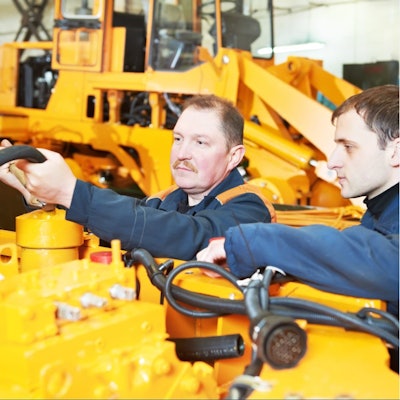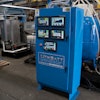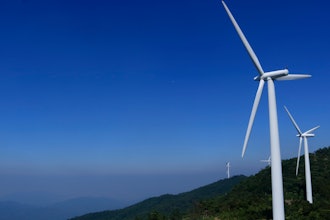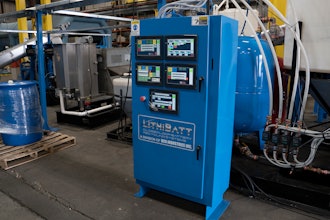
Manufacturing is an ever-changing industry, where manufacturers face new issues and concerns every year. Since this year is no exception, here are a few of the top concerns that manufacturers are grappling with.
Regulatory compliance and traceability
Nearly every type of manufacturer faces increasing regulations aimed at everything from ensuring product safety to managing disposal and reclamation procedures. While many regulations may be beneficial to consumers, each regulation adds an additional burden to the companies that must comply with the requirements, which often differ from country to country.
Manufacturers must ensure they have complete visibility into global supply chains so they can prove not only their own compliance, but also that of their suppliers. Regulations often require the ability to track where specific items have been used or to trace materials from an end-item at a customer site back to specific materials used in its manufacture.
Companies in highly regulated industries, such as medical devices, are facing new regulations including UDI (Universal Device Identification) and ePedigree requirements, while chemical and electronics manufacturers deal with REACH (Registration, Evaluation, Autorization, and Restrictions of Chemicals) and similar laws. Keeping abreast of regulations and managing compliance reporting is often a full-time activity for multiple people or teams at many manufacturing companies.
Keeping products relevant
Product innovations come at a dizzying pace, and manufacturers struggle to keep up. As companies vie to be first to market with a new concept, the temptation to skip steps or skimp on quality materials can be overwhelming. Companies need to plan to have adequate engineering time to ensure that the specifications for critical materials such as wires and cables are in line with operating conditions. The last thing a new product needs is to develop a reputation for poor quality right out of the gate.
Fast times to market mean that companies may need to become more systematic about managing innovation rather than leaving new product ideas to chance. Product preferences change so quickly that delays in introducing new ideas may be the death knell for once popular products. Implementing procedures that keep a steady stream of new product ideas and innovations in the pipeline is essential to manufacturing success.
Aging workforce / Skills gap
As baby boomers reach retirement age in record numbers, they are leaving the workforce and taking their hard-won skills and experiences with them. Younger workers are not readily available to replace these retirees, and those that are available don’t have the necessary skills for many critical roles.
Manufacturers may need to work with schools in their communities to ensure that the educational system includes the topics and skills training those younger workers need to fill these roles. In addition, manufacturers may need to be more flexible with their aging workforce, allowing workers to slow down by working part time rather than retiring abruptly. This phasing to full retirement meets the needs of baby boomers and allows them to pass on their skills to following generations of workers.
Healthcare costs
Rising costs of healthcare for workers put a strain on already fragile manufacturing cost structures. Manufacturers in the U.S. in particular face the burden of providing healthcare while their competitors in other countries do not. There is no strong alternative to the current solution on the horizon, so manufacturers need to be cognizant of this large and growing item that can increase the cost of products to the point where they are not competitive.
Environmental concerns
Many local and regional regulations affect various aspects of the manufacturing process, from the ability to use certain materials, to worker exposure, to disposal of waste and byproducts. Manufacturing is inherently a harsh environment, so ensuring the safety and health of workers with proper care and equipment is of crucial importance. Disposing of waste products and recycling programs for scrap and returned materials add costs and complexity to manufacturing, but also result in a healthier environment and protection for customers and workers alike.
Balancing maintenance with throughput
Keeping equipment functioning is an essential part of running a manufacturing facility. Regular preventive maintenance, including replacing worn wires and cables, can help increase throughput and ensure customer satisfaction with delivery lead times.
Sometimes manufacturers are tempted to postpone or delay preventive maintenance or they replace factory components with lower-quality items. This practice may create unsafe conditions in harsh manufacturing environments if these lesser components can’t stand up to operating conditions. For example, poor-quality or worn cable and wires can result in risk of shocks or electrocution for workers in the worst case, or they may simply cause unplanned or excessive downtime. Using components, cables and wires that meet or exceed manufacturer specifications and performing preventive maintenance on recommended schedules keeps operating costs low and throughput high while helping to ensure worker safety.
Addressing these challenges means that manufacturing companies need to stay current on legislation as well as technology and to be responsive to worker needs while acting responsibly in the best interests of all parties.
Danielle Iera is the Marketing Coordinator of TPC Wire & Cable Corp. (https://www.tpcwire.com/) in Macedonia, OH. TPC Wire and Cable’s products are designed and engineered to withstand harsh industrial and manufacturing conditions like flexing, harsh chemicals, extreme temperature, high impact and abrasion.























